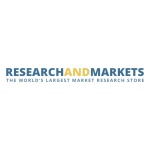
Global Research Antibodies Market (2020 to 2025) - Major Players Include Merck KGaA, Thermo Fisher Scientific and United States Biological Among Others - ResearchAndMarkets.com
DUBLIN--(BUSINESS WIRE)--The "Global Markets for Research Antibodies" report has been added to ResearchAndMarkets.com's offering.

This study focuses on the market side of research antibodies rather than the technical side. Different market segments for this specific market are covered. In this report, the market for research antibodies is segmented based on product type, major reactivities, applications, and geography. Based on product type, the market is segmented into cell wall inhibitors, protein inhibitors, DNA inhibitors, and other inhibitors (RNA, Mycolic Acid, Folic Acid). Based on major reactivities, the market is segmented into oral and topical. The market is also presented based on application type, which is further segmented into human and veterinary.
By geography, the market has been segmented into the North America, Europe, Asia-Pacific, and Rest of the World (South America, and the Middle East and Africa) regions. Detailed analysis of major countries such as the U.S., Germany, the U.K., Italy, France, Spain, Japan, China, India, Brazil, Mexico, GCC countries, and South Africa will be covered in the regional segment. For market estimates, data will be provided for 2019 as the base year, with estimates for 2020 and forecast value for 2025.
Report Includes:
- 64 data tables and 25 additional tables
- An overview of the global market for research antibodies
- Estimation of the market size and analyses of global market trends, with data from 2018, 2019, 2020 and projections of compound annual growth rates (CAGRs) through 2025
- Discussion on the factors affecting the companies' market shares, the current strategies of antibody companies, the effect of research funding, and the third-party quality evaluation systems of research antibodies
- Description of antibody technologies, emerging antibody generation technologies and identification of market drivers, restraints and other forces impacting the global market
- Market share analysis of research antibodies based on product, clonality, application, end-user and region and evaluation of current market trends, market size and forecast
- Discussion on technological trends in antibody production and application, and information on antibody-based drug discovery and development process
- Impact analysis of COVID-19 on entire pharma industry and discussion on how COVID-19 is related to pharmaceutical industry's growth slow-down and results in delayed approvals for non-COVID-19-related pharmaceutical/biotech products
- Coverage of FDA and international regulations, details of recent regulatory reforms and list of antibody therapeutics granted in 2018 and insights into government initiatives and funding in emerging markets
- Market share analysis of the key companies of the industry and coverage of events like mergers & acquisitions, joint ventures, collaborations or partnerships, and other key market strategies
The high growth rate of this segment is attributed to factors such as the demand for antibodies research, the expanding pandemic of COVID-19, other infectious diseases, and an increase in R&D activities by key companies to emerge with new antibodies to counter the rise in different infectious diseases globally. Moreover, the advancement of biological discoveries will result in the need for more molecular targets to be detected by their antibodies. For example, even for the same protein molecule, antibodies for each of its many forms of post-translational modifications are needed. This is likely to propel the growth of the research antibodies market during the forecast period.
Primary antibodies are used alone or in combination with a secondary antibody. For instance, primary antibodies conjugated to fluorochromes are used in flow cytometry, whereas in microscopy, a primary-secondary antibody combination is used to increase the signal.
According to Antibiotic.com, one supplier of antibodies states that primary antibodies can be used against any antigen including proteins, peptides, carbohydrates, and other small molecules. Primary antibodies can also be raised to recognize post-translational modifications such as phosphorylation, acetylation, methylation, and glycosylation.
A rise in basic or clinical research to detect specific cell or tissue components (antigens), a shorter assay time, an increase in the versatility, antigen signal detection, and amplification are the factors likely to fuel the growth of the segment in the next few years.
Market Dynamics
Drivers
- New Discoveries in Biological Sciences
- Rapid Technological Developments in the IVD Industry
- New Antibody Technologies and Antibody Types
- Antibody-Based Drug Discovery and Development
- Developed and Increasing Research Areas
- Increased Government Funding in Emerging Markets
- Need for Further Human Genomic and Proteomic Research
- Need for Quality Antibodies in the Current Research Community
- Need for Antibody Custom Services
- New Application-Focused Technology Platforms
Restraints
- Limited Research Funding
- Low Validation Technologies
- Decline in Suppliers
- Decrease in Market Acceptance or Brand Trust
Opportunities
- Market Expansion into Emerging Countries
- Development of Novel Research Antibodies
Companies Mentioned
- Abcam
- Absolute Antibody Ltd.
- Agilent Technologies Inc.
- Bd Biosciences
- Beckman Coulter Inc.
- Bio-Rad (Abd Serotec)
- Bio-Techne
- Cell Signaling Technology
- Jackson Immunoresearch Laboratories Inc.
- Milliporesigma
- Rockland Immunochemicals Inc.
- Santa Cruz Biotechnology Inc.
- Sino Biological
- Thermo Fisher Scientific Inc.
- United States Biological
For more information about this report visit https://www.researchandmarkets.com/r/5a76ta
Contacts
ResearchAndMarkets.com
Laura Wood, Senior Press Manager
press@researchandmarkets.com
For E.S.T Office Hours Call 1-917-300-0470
For U.S./CAN Toll Free Call 1-800-526-8630
For GMT Office Hours Call +353-1-416-8900
Editor Details
-
Company:
- Businesswire
